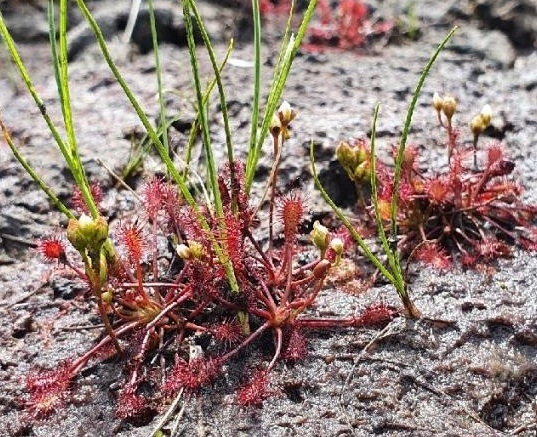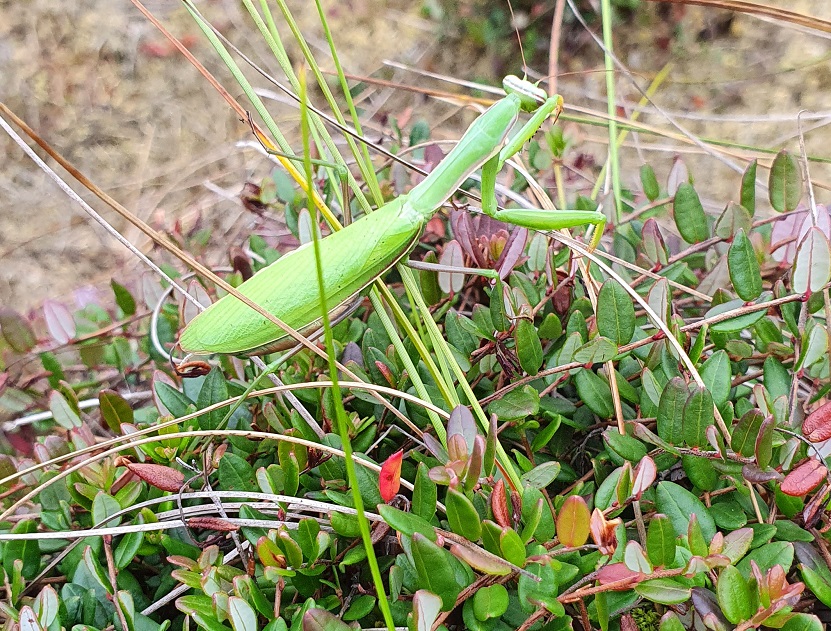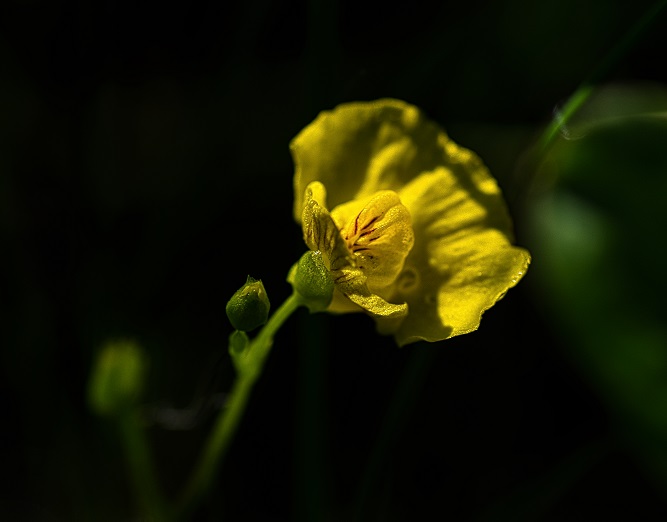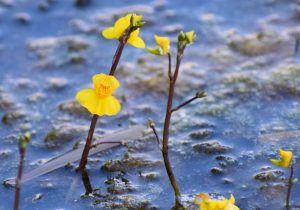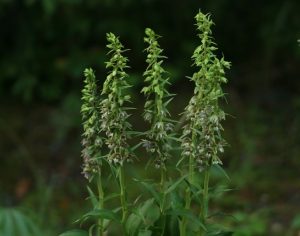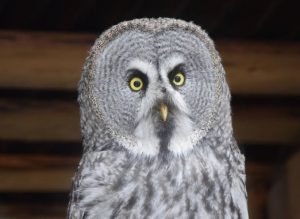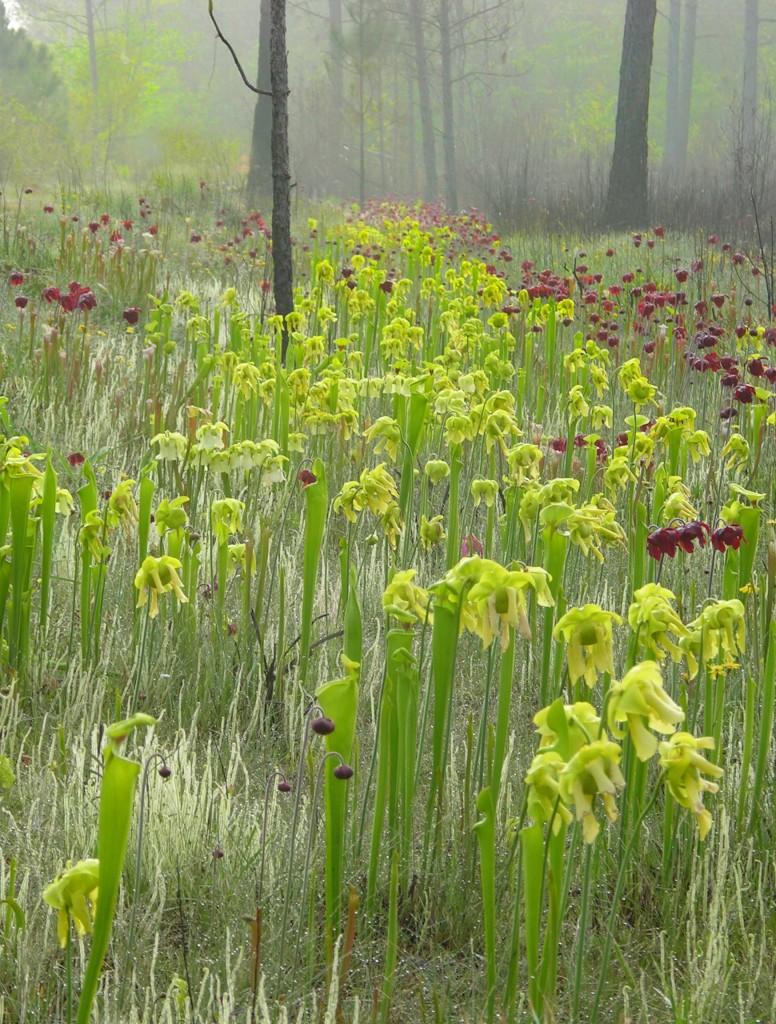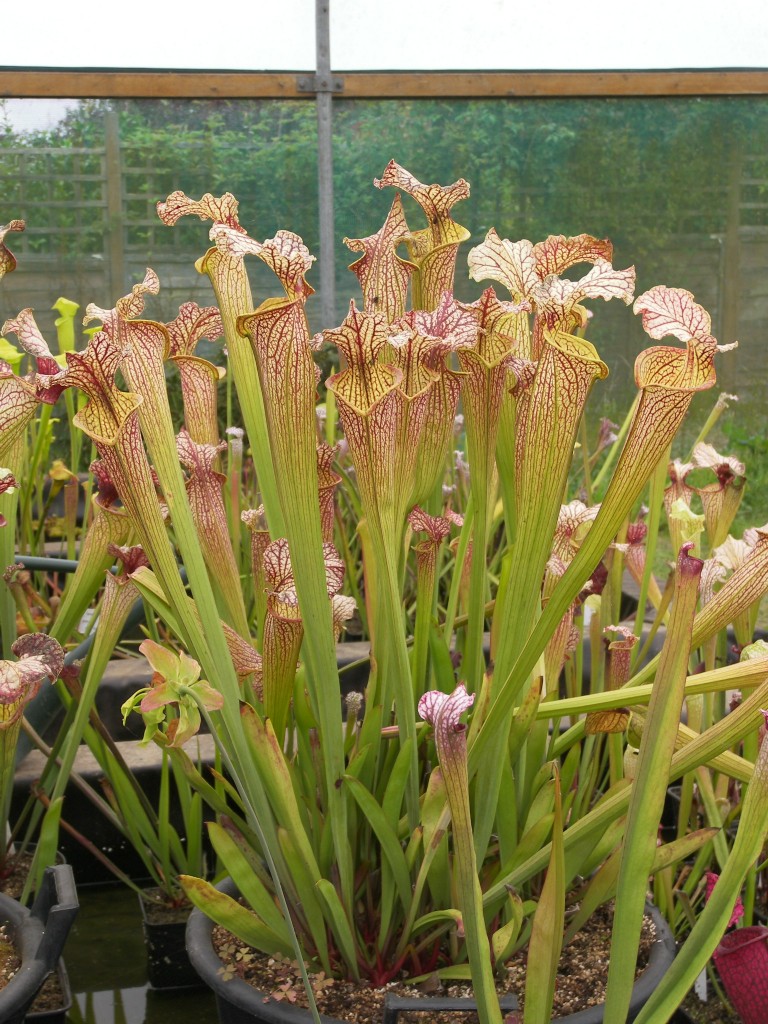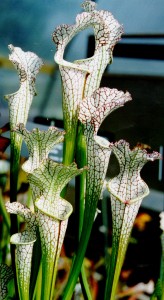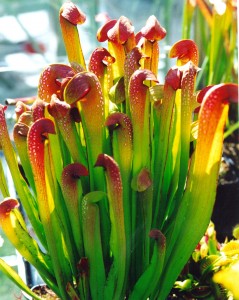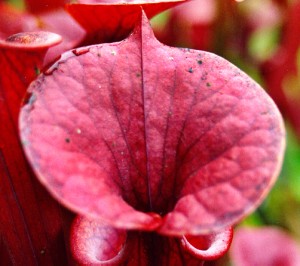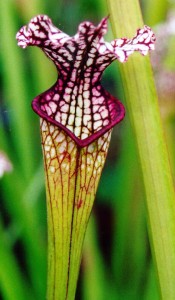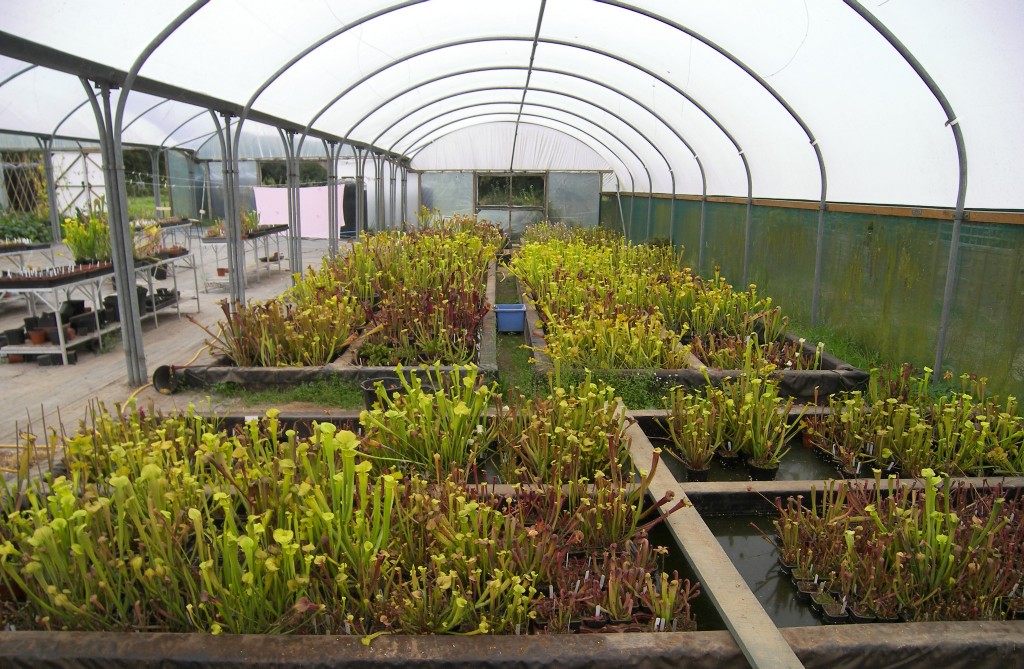Sarracenia is a genus of eight species of pitcher plants that naturally occurs across North America, mainly in the southern gulf coast of the United States of America. Sarracenia are noteworthy in that all species of this group produce spectacular tubular foliage which is often bright coloured and very beautiful. The hollow, tubular leaves (like those of all pitcher plants) are adapted to trapping and digesting arthropods (mainly flying insects) which enables these plants to survive in wetland habitats that are otherwise deficient in essential nutrients and minerals. In this way Sarracenia plants augment nutrients and minerals which they cannot acquire from the substrate of their habitats and are able to survive in barren, inhospitable areas where regular (non-carnivorous) plants cannot grow.
The genus was named in honour of the Canadian physician Dr. Michel Sarrazin who, at the start of the 18th Century, secured twenty-five specimens and sent them to the French botanist Joseph Pitton de Tournefort for classification. In gratitude, Tournefort later named the genus Sarracenia in honour of Sarrazin and so the group was named.
Sarracenia was the first genus of pitcher plants discovered in the Americas and the earliest known record is an illustration and brief mention of S. minor in Matthias de l’Obel and Petrus Pena’s Nova Stirpium Adversaria, first printed in 1570. Since their early discovery, the eight currently recognized species have been widely documented and studied across the world. Sarracenia have been cultivated in Europe for at least two centuries and are widely growing in popularity, and today specialist nurseries retail Sarracenia plants across North America, Europe, Asia and Australia. Once a few basic growing requirements are understood, Sarracenia are not difficult plants to cultivate successfully, and well grown specimens are very interesting and very beautiful showy plants.
In order to understand how to grow Sarracenia successfully we should first consider the environmental conditions of the habitats in which these plants naturally occur. All species of Sarracenia grow in permanently wet, acidic bogs, where the substrate is peaty and deficient in nutrients. In most cases, the habitats of Sarracenia is little shaded and so most Sarracenia plants naturally grow exposed to strong or direct sunlight. The annual temperature cycle of Sarracenia habitat fluctuates between a temperate summer and a cold winter – usually the summer daytime temperatures ranges between 20 – 30ºC whereas in winter temperatures fall considerably and are low or sub zero for several months at a time. In order to grow Sarracenia, there are therefore five important environmental factors which need to be appreciated and replicated to produce an environment in cultivation in which these plants can grow.
Firstly, due to the permanent abundance of water in the habitats of Sarracenia, in most cases, Sarracenia plants need to be gown in pots that permanently stand in 2 – 3 cm of water. Usually this can easily be achieved if pots of Sarracenia plants are placed in trays of water a few centimeters deep. Throughout the growing season, it is important that the level of water in the tray is filled regularly to ensure that the pots of plants are permanently wet. If the soil in which Sarracenia plants grows dries out, it can result in the death of the plant.
Secondly, the type of water must be considered. In their natural habitats, Sarracenia plants grow in pure, clean water that is strongly acidic and deficient in nutrients. Chlorinated water from taps in most towns and cities is usually toxic to Sarracenia since it contacts chemicals which destroy the delicate root systems of these plants. In most cases, Sarracenia cannot therefore be watered with regular water from the tap since this may cause the plants to die. Instead, for best results, Sarracenia should be watered only with rain water which is free of the chemicals and more akin to the water which the plants naturally receive in the wild. Rain water should be collected for Sarracenia plants, and this can easily be achieved by use of a water butt or pond linked to a gutter system of a house. Collected rainwater can then be stored and used to water Sarracenia plants as necessary.
The third growing requirement of Sarracenia is the type of soil that is used. Sarracenia plants, like most carnivorous plants, are very specific with regards to the type of soil in which they can grow. This is because these plants have evolved to become carnivorous in habitats that are deficient of nutrients and minerals and consequently their root systems are unable to absorb water or minerals if nutrient concentrations are too high. As a result, Sarracenia need acidic soil that is lacking in most nutrients. In cultivation, the best compost to use to grow Sarracenia is high grade sphagnum peat, mixed with perlite and horticultural silver sand mixed at a concentration ratio of 2:1:1 parts. The resultant compost is a soil that is suitably low in nutrients and suitably acidic which will be perfect for Sarracenia to grow in. If Sarracenia plants are planted in regular compost for normal house plants, they will usually die due to the abundance of nutrients in the soil. For the same reason, fertilizing Sarracenia plants can also result in their death, and it is generally advisable not to apply any fertilizer since Sarracenia plants can acquire all of the nutrients that they require through trapping insect prey.
The forth growing requirement that needs to be understood in order to cultivate Sarracenia successfully is temperature. All species of Sarracenia require a period of dormancy that reflects the winter of the northern hemisphere. In the natural habitat, Sarracenia plants become dormant during winter for a period of three to five months. In order to cultivate Sarracenia plants successfully, a period of at least three months of cold temperatures must be provided during which plants become dormant. This period of dormancy can easily be provided by placing Sarracenia plants in the fridge for three or four months each year, see D’Amato (1998), Slack (1979, 1986) and Rice (2006). When preparing Sarracenia plants for dormancy, it is important that the soil in which the plants are grown is allowed to drain so that when Sarracenia plants are placed in the fridge, the substrate is not wet or waterlogged, which could otherwise cause living plants to rot. After each period of dormancy, Sarracenia plants can be removed from the fridge and grown normally. Immediately after dormancy, Sarracenia plants will flower and then produce a succession of carnivorous, tubular leaves.
The fifth and final important factor that needs to be appreciated in order to cultivate Sarracenia successfully is the exposure of plants to sunlight. In their natural habitats, Sarracenia plants are exposed to strong sunlight with little or no shade. If light is inadequate, Sarracenia plants will produce long, etiolated, spindly leaves that are predominantly green and weak. For best results, Sarracenia plants should grow in strong or preferably direct sunlight and as a general rule, the brighter the sunlight to which they are exposed, the more colourful the leaves will become. The colouration of each species varies, but in strong, direct sunlight, the leaves of most species will develop spectacular, red, yellow or purple colouration.
If these five basic requirements are met, Sarracenia plants will generally grow vigorously and rapidly in cultivation. Young plants mature within a few years and rapidly form large clumps that consist of dozens of spectacular pitchers. Individual plants can live for many decades and cuttings and divisions can easily be made. Large numbers of Sarracenia plants can be planted to form spectacular living displays that can be extremely spectacular. A more completed understanding of how to successfully cultivate Sarracenia plants can be gained from reading the works of D’Amato (1998), Slack (1979, 1986) and Rice (2006) which I recommend to the reader interested in learning more of these spectacular pitcher plants. I also recommend that horticulturalists attempting to grow Sarracenia plants for the first time should try to grow one or two specimens first to establish whether growing conditions are right. Generally hybrids are easier to grow than pure species, so usually it is best to start with hybrid plants, which fortunately, are usually the most widely available and least expensive plants from nurseries and garden centers.
Once one can successfully cultivate Sarracenia plants, there is a wealth of different species and hybrids which can be selected. Each of the eight species of Sarracenia consists of a wide variety of forms and varieties, which in most cases, vary in the colouration of their foliage, see McPherson (2006). Furthermore, over the last two centuries since Sarracenia were first grown in Europe and North America, a wide variety of hybrids and cultivars have also been created, many of which produce spectacular, colourful and very showy leaves.
Aside from the spectacular colouration of their foliage, Sarracenia plants have two further interesting characteristics. Since their leaves secrete nectar copiously in order to attract prey, Sarracenia plants generally smell very sweet, often like honey, and so when many plants are grown together, they may create a very pleasant sweet aroma. Furthermore, their ability to trap insects can be useful and to some extent, these plants can control the amount of flies, wasps and bees present at certain times of the year. There are several large nurseries which specialize in Sarracenia plants, and offer them for export across the world, some of which are listed below.
The cultivation and conservation of Sarracenia plants is increasingly important due to the alarming rate by which their natural habitat is being destroyed. Estimates suggest that only 2.5% of original Sarracenia habitat in the United States of America exists today and even the remaining patches continue to be threatened and destroyed. The destruction has mainly been due to the artificial drainage of wetland areas, artificial fire suppression and also commercial forestry activity and shows little sign of abating. While no species of Sarracenia has yet become extinct in the wild, two are listed on the CITES appendix one list for endangered species and the remaining six species are becoming increasingly rare in the wild. By growing Sarracenia in cultivation, we can ensure that a sustainable bank of plants is ready to assist repopulation efforts in the future and so actively contribute to the long term survival of this fascinating and spectacular group of plants.
Sarracenia plants can be purchased from the following sources
Hewitt-Cooper Carnivorous Plants (a specialist nursery that focuses on Drosera) The Homestead, Glastonbury Road, West Pennard, Somerset, BA6 8NN, United Kingdom Website: www.hccarnivorousplants.co.uk Hampshire Carnivorous Plants Ya Mayla, Allington Lane, West End, Southampton, SO30 3HQ, United Kingdom Website: www.hantsflytrap.com P&J Carnivorous Plants The Hayden, Brampton Lane, Madley, Hereford, HR2 9LX, United Kingdom Website: www.pj-plants.co.uk Sarracenia Nurseries 37 Stanley Park Road, Carshalton, Surrey, SM5 3HT, United Kingdom Website: www.sarracenia.co.uk Shropshire Sarracenias 5 Field Close, Malinslee, Telford, Shropshire, TF4 2EH, United Kingdom Website: www.carnivorousplants.uk.comBibliography
- D’Amato, P. 1998. The Savage Garden: Cultivating Carnivorous Plants. Berkeley, CA: Ten Speed Press.
- McPherson, S. 2006. Pitcher Plants of the Americas. Blacksburg, Virginia, The McDonald & Woodward Publishing Company.
- Rice, B., 2006 Growing Carnivorous Plants Portland, OR: Timber Press.
- Slack, A. 1979. Carnivorous Plants. London, England: Ebury Press.
- Slack, A. 1986. Insect Eating Plants and How to Grow Them. London, England: Alpha Books.
Stewart McPherson
